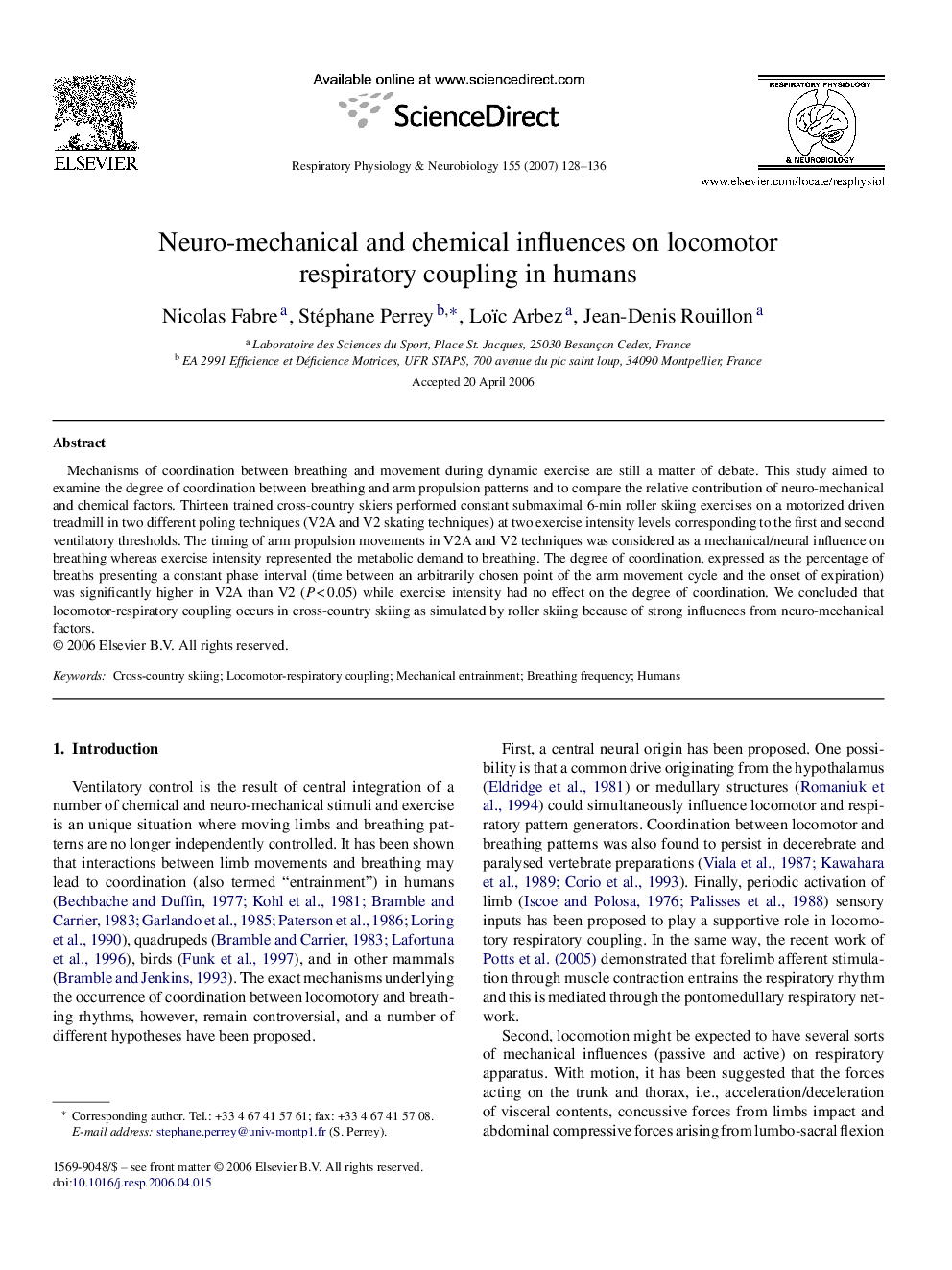| Article ID | Journal | Published Year | Pages | File Type |
|---|---|---|---|---|
| 2848539 | Respiratory Physiology & Neurobiology | 2007 | 9 Pages |
Mechanisms of coordination between breathing and movement during dynamic exercise are still a matter of debate. This study aimed to examine the degree of coordination between breathing and arm propulsion patterns and to compare the relative contribution of neuro-mechanical and chemical factors. Thirteen trained cross-country skiers performed constant submaximal 6-min roller skiing exercises on a motorized driven treadmill in two different poling techniques (V2A and V2 skating techniques) at two exercise intensity levels corresponding to the first and second ventilatory thresholds. The timing of arm propulsion movements in V2A and V2 techniques was considered as a mechanical/neural influence on breathing whereas exercise intensity represented the metabolic demand to breathing. The degree of coordination, expressed as the percentage of breaths presenting a constant phase interval (time between an arbitrarily chosen point of the arm movement cycle and the onset of expiration) was significantly higher in V2A than V2 (P < 0.05) while exercise intensity had no effect on the degree of coordination. We concluded that locomotor-respiratory coupling occurs in cross-country skiing as simulated by roller skiing because of strong influences from neuro-mechanical factors.
